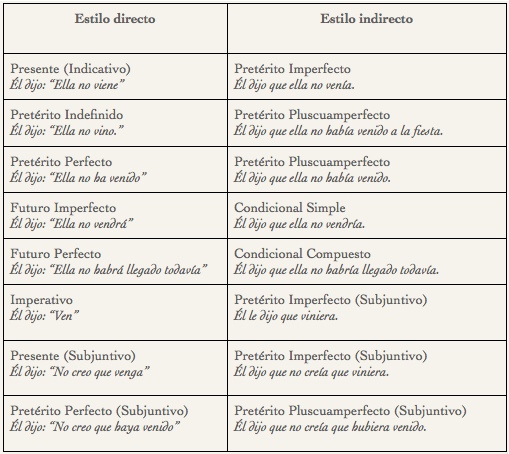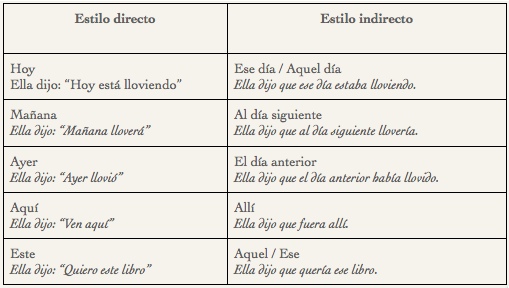We use the reported speech when we want to say what other people say, think or believe.
There are two ways of report this information:
- Direct speech: when we transmit the original message word for word. We introduce the information with an introductory verb followed by inverted commas.
Example:
The president said: “Yes we can.”
El presidente dijo: “Sí, podemos.”
- Indirect speech: when we transmit the original message with our own words. We introduce the information with an introductory verb followed by “que” (‘that’).
Example:
The president said that we could.
El presidente dijo que podíamos.
Indirect Speech (Reported Speech)
When we convert a direct speech message into indirect speech there are changes in three different aspects.
- The tense of the verb changes:
* The “Imperfecto de Indicativo y subjuntivo, pretérito pluscuamperfecto de indicativo y de subjuntivo, condicional simple y perfecto” doesn’t change.
2. The pronouns changes:
When we convert a sentence into reported speech the person speaking changes, so the first person changes into third, and the second changes into first.
Example:
He said: “I don’t want your book” > He said that he didn’t want my book.
Él dijo: “No quiero tu libro” > Él dijo que no quería mi libro.
Él dijo: “No quiero tu libro” > Él dijo que no quería mi libro.
3. The time and space expression changes:
Video Class in Spanish
Watch the video below to test your Spanish listening skills with this class about the reported speech in Spanish with subtitles.




